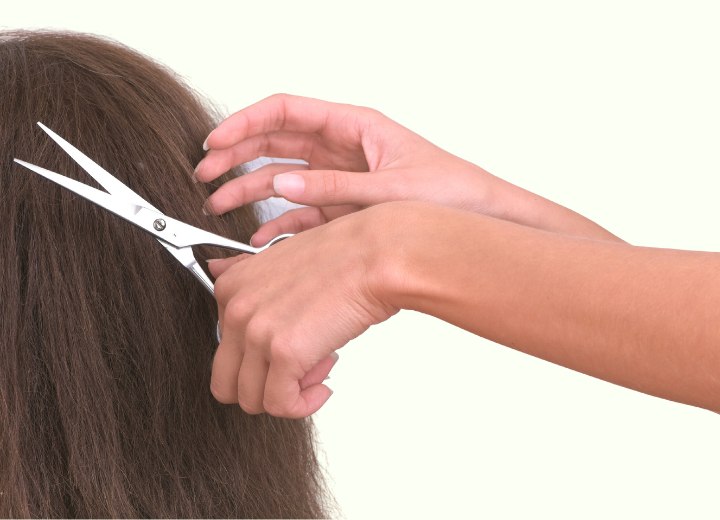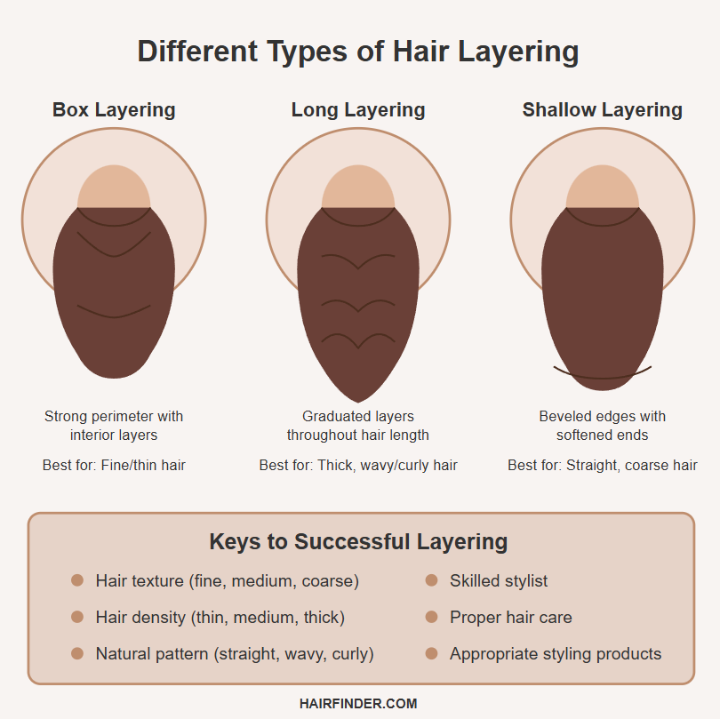Different Types of Layering

A: Yes, there are several distinct types of layering techniques, each designed to complement different hair characteristics and desired outcomes. Your experience is actually quite common, as layering isn't one-size-fits-all. It needs to be tailored to your specific hair type.
If you have thick, wavy, or curly hair, long layering techniques (which create classic layered looks and shag styles) help distribute weight and reduce bulk. This prevents the "triangle" or "mushroom" effect where hair flares outward at the bottom while appearing flat on top.
For those with straight, coarse, thick hair, shallow layering techniques like beveling can soften the ends and diffuse hard edges. This creates a smooth, polished finish that flows naturally without appearing heavy.

Fine or thin-textured hair typically struggles most with layering because each strand has fewer neighboring hairs to provide structure and protection. When layered, these hair types can become more vulnerable to environmental factors and appear frizzy or uncontrolled. If this describes your situation, using a gentle sulfate-free shampoo and applying a lightweight leave-in conditioner can help restore control while your hair grows out.
Additionally, consider discussing your concerns with your stylist. A skilled professional should evaluate your hair's texture, density, porosity, and growth patterns before recommending a layering technique. They might suggest alternatives like face-framing layers or long layers that start below the chin to give movement without compromising your hair's integrity.
Proper styling products and techniques are crucial for making any layered cut work. What works for someone else might not work for you because of differences in hair type that aren't immediately obvious to the untrained eye.
©Hairfinder.com
See also:
How to layer long hair
How to grow out layers
What are invisible layers?